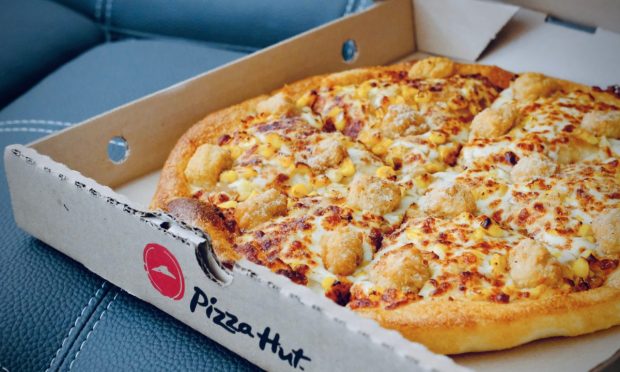Pizza Hut Tests Fully Robotic Restaurant, Portending the Vending Machine-ified Future of the Pizzeria

When it comes to pizza, consumers may be ready for robotic restaurants.
Pizza Hut now has a fully automated location at a mall in Bnei Dror, Israel, per a video shared on LinkedIn by Hyper Food Robotics, the tech company powering the location. Given the quick-service restaurant (QSR) industry-wide trend toward convenience and efficiency above all else, the model could grow to be a core part of the pizza chain’s restaurant strategy when the technology becomes affordable enough to make the economics work.
At the automated location, consumers order through kiosks outside the restaurant or through Pizza Hut’s app. With the current model, a server withdraws the pizzas from designated cubbies and brings them to the customers, but the next model will feature self-service order collection — effectively a more complex, large-scale vending machine.
At this early stage, it is unlikely that the technology is cost-effective enough to make it worthwhile to scale the system up chain-wide anytime soon. However, if the technology proves effective and if consumers prove willing to regularly order from this robotic restaurant, the location could suggest possibilities for major changes to the chain’s restaurant footprint down the line. The model could enable the brand to bring in sales without the labor cost of service or production and with lower real estate costs for smaller stores.
This location is far from Pizza Hut’s first entry into robotics. In January, the brand’s Israeli arm announced a drone delivery trial.
Read more: Pizza Hut Israel Plans Drone Delivery Trial
In 2018, the brand partnered with Toyota on a “mobile pizza factory,” a pizza-making robotic pickup-style truck.
See more: Toyota Enters Delivery Biz With Amazon, Uber Partnership
The same year, the two companies were working together on autonomous electric cars. Back in 2016, the pizza chain used SoftBank’s Pepper robot (which SoftBank has since discontinued, at least for now) for order taking and payment.
Read more: Mastercard Makes Robots Pay
Competitor Domino’s has also made moves into the robotics space. In April, the company began testing robotic delivery in Houston, Texasm in partnership with autonomous vehicle company Nuro.
See more: In Houston, Domino’s Road Tests Nuro’s R2 Robot for Pizza Delivery
In 2017, the company began piloting deliveries with sidewalk robots in select German and Dutch cities.
Read more: Domino’s Is Delivering Pizza Via Robot in German, Dutch Cities
Back in 2016, the company’s Australian arm announced “the world’s first autonomous pizza delivery vehicle.”
See more: Domino’s Robot Reality Check
The pizza industry tends to be a hot spot for restaurant automation, since the food has a history of being consumers’ go-to choice for speed, convenience and low prices, a staple in the delivery space and a favorite for diners on the go. As such, consumers typically do not care as much about, say, the service at a pizza parlor.
Read also: To See Where the QSR Industry Is Headed, Look to Pizza
Additionally, pizza-making is uniquely suited for automation in that the process is not as complicated as other cooking techniques to automate, but it can be time- and training-intensive for human workers.
“We’re doing something that, for a human, is not complicated — it’s just hard,” Clayton Wood, CEO of pizza-making robotics company Picnic, told PYMNTS in an interview last year. “It’s tedious. It requires attention to detail. When you have lightly trained workers, it’s hard for them to be consistent … So, we think pizza is a great food to automate for that reason.”
See more: Kitchen Automation Turns Digital Order Volume From Challenge to Opportunity
